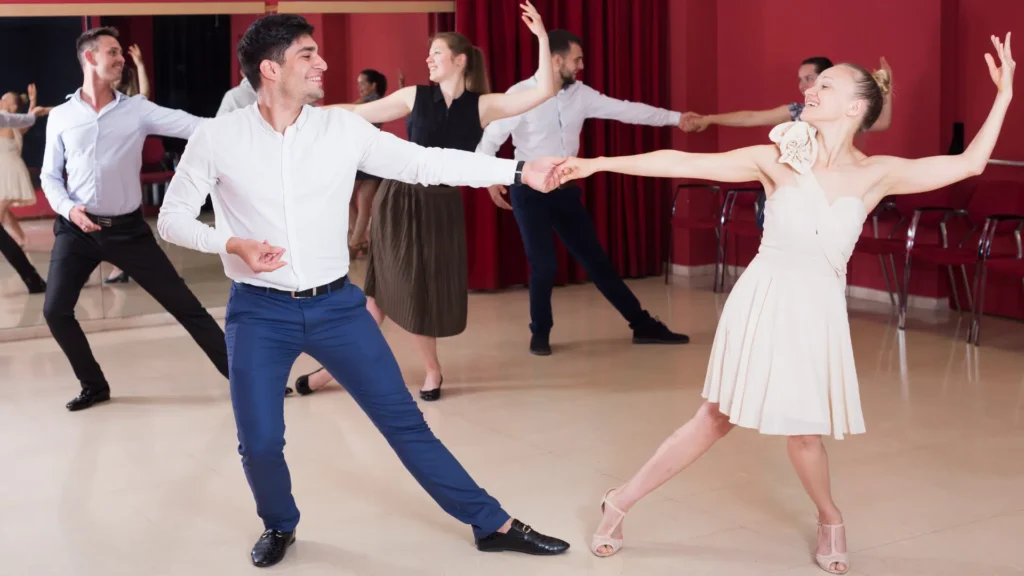For many, ballroom dancing is an elegant, fluid motion that looks effortless from the outside. However, this grace is the result of a precise and often underappreciated element: direction. Beyond just the steps, direction is the spatial navigation, the silent communication, and the intentional path that separates a couple that is merely moving together from one that is truly dancing as a single unit.
The dancer’s compass: Navigating the floor
In ballroom, every movement is guided by a universal map known as “room alignments,” often referred to as the dancer’s compass. These are a set of standardized directions, like Line of Dance, Wall, and Center, that give dancers a spatial reference point in any ballroom.
Knowing these alignments is crucial for several reasons:
- Preventing collisions: In crowded social dance settings or on a competitive floor, dancers who understand floorcraft and their directional movement can anticipate and avoid running into other couples. Traveling dances like the waltz and foxtrot follow a counter-clockwise path around the floor, and adhering to this “line of dance” keeps traffic flowing smoothly.
- Executing choreography: For both students and advanced dancers, room alignments provide the vocabulary for understanding and executing complex figures. Your instructor can give precise cues like “step diagonally to the wall” (DW) or “back diagonal center” (BDC), leaving no room for guesswork.
- Building spatial awareness: Training with this “mental compass” significantly enhances a dancer’s spatial awareness. This allows you to instinctively know where you are in relation to your partner and the room, leading to more intentional and confident movement.
The silent conversation of a partnership
For the lead and follow, direction is the central language of their non-verbal conversation. In a solid dance frame, subtle movements of the body transmit directional signals that the follower interprets and responds to.
- For the leader: Direction is communicated through the body, not just the arms. A decisive step forward, a shift of weight, or a rotation of the rib cage signals the intended path to the follower. A strong leader is not only responsible for choosing the next move but for guiding the couple safely and smoothly around the floor.
- For the follower: Reading the leader’s directional cues is a skill that requires active listening and trust. It’s the ability to interpret a slight change in pressure or movement and respond with precision and grace. This isn’t passive following, but an active, responsive partnership that makes the dance effortless.
More than just a step
Ultimately, direction is what brings intention and purpose to a performance. A dancer with poor direction might hit all the right beats, but their movement will look aimless or hesitant. A dancer who masters direction can create beautiful, flowing lines and powerful, dynamic movement.
Whether you are a social dancer navigating a crowded floor or a competitive couple refining your routine, understanding and executing direction with clarity is fundamental to your success. It is the compass that guides your journey, the language that fuels your partnership, and the intentional movement that makes your dance a truly mesmerizing experience.


